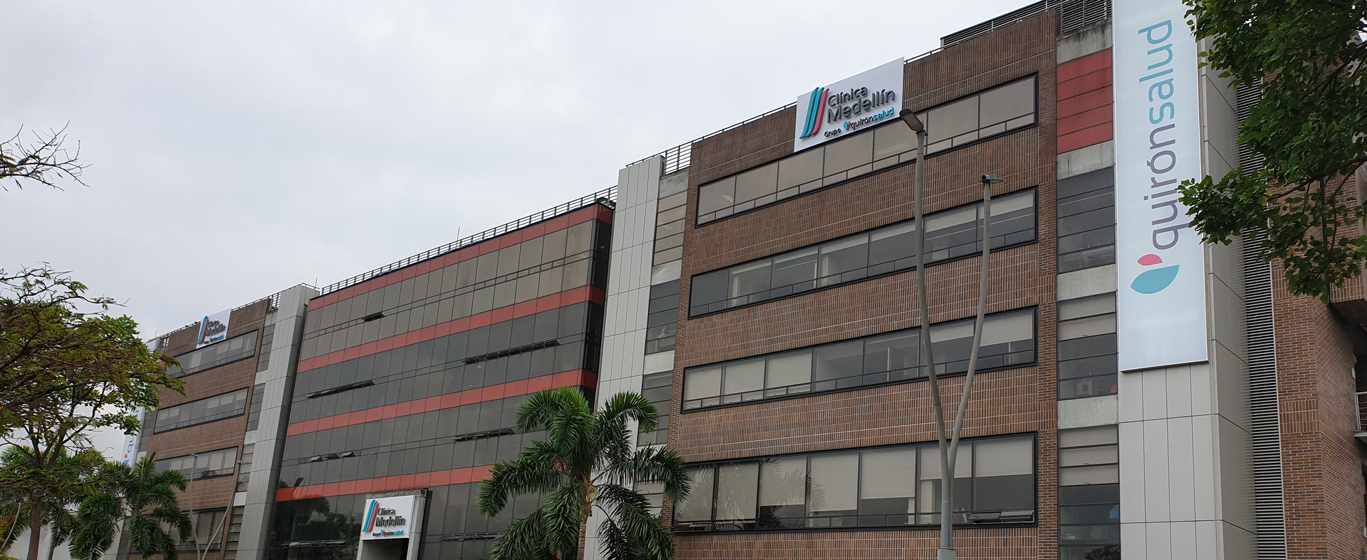Hypertrophic Cardiomyopathy
Is hypertrophic cardiomyopathy hereditary? Learn everything about this condition: causes, symptoms, and treatment.
Symptoms and Causes
Hypertrophic cardiomyopathy is a disease characterized by abnormal thickening (hypertrophy) of the myocardium, the heart muscle. This thickening most commonly affects the interventricular septum and the left ventricle. The condition impairs the heart’s pumping function, as the thickened ventricular walls become stiff and fail to relax properly, preventing the cardiac chambers from filling with blood.
Based on the affected region of the myocardium, hypertrophic cardiomyopathy is classified as:
- Asymmetric septal hypertrophic cardiomyopathy: thickening occurs in the interventricular septum.
- Concentric hypertrophic cardiomyopathy: thickening of the left ventricular wall.
- Apical hypertrophic cardiomyopathy: affects the apex of the heart.
Depending on the impact on blood flow, there are two types of hypertrophic cardiomyopathy:
- Obstructive hypertrophic cardiomyopathy: hypertrophy blocks the outflow of blood from the left ventricle to the rest of the body.
- Non-obstructive hypertrophic cardiomyopathy: no significant obstruction to blood flow is present.
Most patients with hypertrophic cardiomyopathy have a normal life expectancy, but frequent medical check-ups are essential, as they are at increased risk for sudden cardiac death.
Symptoms
Hypertrophic cardiomyopathy does not always present symptoms. When symptoms do appear, they typically manifest during physical exertion:
- Dyspnea: shortness of breath.
- Chest pain.
- Palpitations: irregular or rapid heartbeat.
- Syncope or fainting: a serious symptom and a sign of poor prognosis.
Causes
In most cases, hypertrophic cardiomyopathy has a genetic origin and is caused by inherited or spontaneous mutations in one or more genes that encode sarcomere proteins, which are the functional units of muscle fibers. Affected proteins may include myosin heavy chain, actin, troponin T, troponin I, myosin-binding protein C, and myosin light chain.
In rare cases, however, hypertrophic cardiomyopathy may be acquired and develop due to certain disorders:
- Acromegaly: excessive growth due to overproduction of growth hormone.
- Pheochromocytoma: a tumor that causes excess production of the hormone epinephrine.
- Neurofibromatosis: a genetic disorder that results in soft tissue growth within the nervous system.
Risk Factors
The risk of developing hypertrophic cardiomyopathy increases under the following conditions:
- Family history of the disease.
- Presence of acromegaly, pheochromocytoma, or neurofibromatosis.
Complications
Thickening of the endocardium may interfere with normal atrial contraction and lead to atrial fibrillation, an irregular and rapid heart rate that promotes the formation of blood clots. These clots can detach, travel through the bloodstream, and cause a stroke. Additionally, cardiac rhythm disturbances (arrhythmias) may lead to syncope, which often precedes sudden cardiac death.
Hypertrophic cardiomyopathy can also lead to heart failure if the endocardium becomes excessively rigid due to thickening, preventing the heart from filling adequately. As a result, the heart cannot pump enough blood to meet the body’s needs.
In obstructive hypertrophic cardiomyopathy, the obstruction of blood flow can prevent the mitral valve from closing properly, causing mitral regurgitation, where blood leaks backward into the atrium. This condition may also progress to heart failure.
Prevention
There is currently no known way to prevent hypertrophic cardiomyopathy. However, as it is largely a genetic disorder, individuals with a first-degree family history of the disease can undergo genetic testing to determine whether they carry the defective gene. If so, further testing can be done to check whether the disease has manifested. Early diagnosis helps reduce the risk of complications.
Which doctor treats hypertrophic cardiomyopathy?
Hypertrophic cardiomyopathy is diagnosed and treated by specialists in cardiology and cardiovascular surgery.
Diagnosis
After evaluating symptoms and reviewing the patient’s medical history, several tests are performed to confirm a diagnosis of hypertrophic cardiomyopathy:
- Electrocardiogram (ECG): this test measures the heart's electrical activity and detects heart rate abnormalities. A portable Holter monitor may also be used to record heart activity over 24 to 48 hours.
- Echocardiogram: ultrasound images of the beating heart show thickened endocardial walls. Doppler echocardiography also visualizes blood flow and measures contraction and filling of the heart.
- Stress test: evaluates how the heart responds to physical exertion. The patient performs exercise on a treadmill or stationary bike while undergoing an echocardiogram.
- Magnetic resonance imaging (MRI): high-frequency radio waves and magnetic fields generate highly detailed images that complement echocardiogram findings.
- Cardiac catheterization: a catheter is inserted into a blood vessel and guided to the heart using imaging. This procedure measures pressures within the heart chambers and assesses the degree of blood flow obstruction.
Treatment
Hypertrophic cardiomyopathy has no cure, so treatment focuses on relieving symptoms and minimizing the risk of complications.
- Pharmacological treatment: used in patients with mild to moderate symptoms.
- Beta-blockers: slow heart rate and reduce contraction strength.
- Disopyramide: enhances the effects of beta-blockers by further reducing contraction strength.
- Calcium channel blockers: decrease cardiac muscle stiffness and improve chamber filling.
- Anticoagulants: used to prevent clot formation in cases of atrial fibrillation.
- Surgical treatment: indicated when symptoms are severe and drug therapy is ineffective.
- Myectomy: a portion of the thickened heart muscle is surgically removed to improve blood outflow. If mitral regurgitation is present, the valve is repaired during the same operation.
- Alcohol septal ablation: alcohol is injected into the thickened heart muscle via catheter to destroy a small portion of it.
- Implantable cardioverter-defibrillator (ICD): a device implanted under the skin near the collarbone that continuously monitors heart rhythm. It delivers electric shocks to restore a normal rhythm when needed, helping to prevent sudden cardiac death.
- Dual-chamber pacemaker: in cases of obstructive hypertrophic cardiomyopathy, this device stimulates both the atrium and ventricle sequentially to reduce outflow tract obstruction and improve blood ejection.
Heart transplant: considered in end-stage heart failure unresponsive to other treatments.
























































